Florida Seagrass Protection and Destruction Penalties
Seagrass is a type of underwater flowering plant that is usually found in shallow marine waters and estuaries. Seagrass plays a vital role in Florida’s marine ecosystems, but is currently under threat from careless recreational boating practices. Discover the penalties for the destruction of seagrass in Florida, why the plant is so important and what boaters can do to protect it.
The importance of Florida seagrass
- Stabilization: Seagrass has extensive root systems that help stabilize the sea bottom, like grass preventing soil erosion on land. Seagrass diminishes the force of currents along the sea bottom, reducing waves and limiting the damage storms bring to the coast.
- Food: Endangered species such as Florida manatees and green sea turtles rely on seagrass as their main food source. Seagrass also indirectly provides species with nutrients through decomposition and the organisms that use it as shelter.
- Shelter: Many species use seagrass meadows as shelter for their young to protect them from predators. Seagrass leaves are also ideal places to attach larvae and eggs.
- Water quality: Seagrass helps trap sediment and particles, increasing water clarity. It also filters out pollution from industrial discharge and stormwater runoff.
- The economy: Around 70% of Florida’s commercial and recreational fishery species spend part of their early life stage in seagrass meadows.
How boating can endanger seagrass
As the number of boats on Florida waters increases, reckless boating is having more and more of a detrimental effect on local seagrass. Propellers frequently cut through seagrass, and boats often run aground in shallow seagrass beds, causing even more damage. It can take the seagrass anywhere from a few months to several years to recover.
Going through seagrass can have serious consequences for boaters as well as the seagrass. If you accidentally ground your boat, it may damage your hull, engine and/or propeller. You might find yourself needing to pay for a tow, and you may also be subject to fines for seagrass destruction.
Penalties for the destruction of seagrass in Florida
The destruction of seagrass in aquatic preserves is a violation of Florida law that carries a penalty of up to $1,000. There are also regulations that can hold boaters liable for the damage to the seagrass and the resulting costs of assessment, restoration and long-term monitoring.
What boaters can do to protect seagrass
- Wear polarized sunglasses when boating to help you see seagrass beds and shallow areas through the surface of the water.
- Study navigation charts to familiarize yourself with the waterway before setting out so that you can avoid seagrass beds and shallow areas.
- Familiarize yourself with boating markers, signs and symbols and what they mean so that you can stay within marked channels and avoid areas that are off-limits to boaters due to dangerous shallows or seagrass meadows.
- Know the depth of your draft and be aware of low and high tide times to avoid running aground.
- Slow down to idle speed when in doubt about the depth of the water.
- Check behind you when boating in shallow areas or seagrass to see if you’re churning up a muddy trail—if so, you’re probably damaging seagrass.
- If you run aground, don’t use your motor—you may cause further damage to both your craft and the seagrass. Instead, use a pole or walk your boat to deeper water.
Boat responsibly with Drive a Boat USA
It’s important for every boater to operate their vessel in a way that is not detrimental to marine habitats or other boaters. Florida’s boating laws and boating law enforcement agencies are there to help ensure that boaters act responsibly and safely on the water.
Drive a Boat USA offers a US boat safety course that teaches vessel operators everything they need to know about safe and responsible boating practices. Study at your own pace online and take the Florida boat exam when you feel ready to obtain your official certification!

